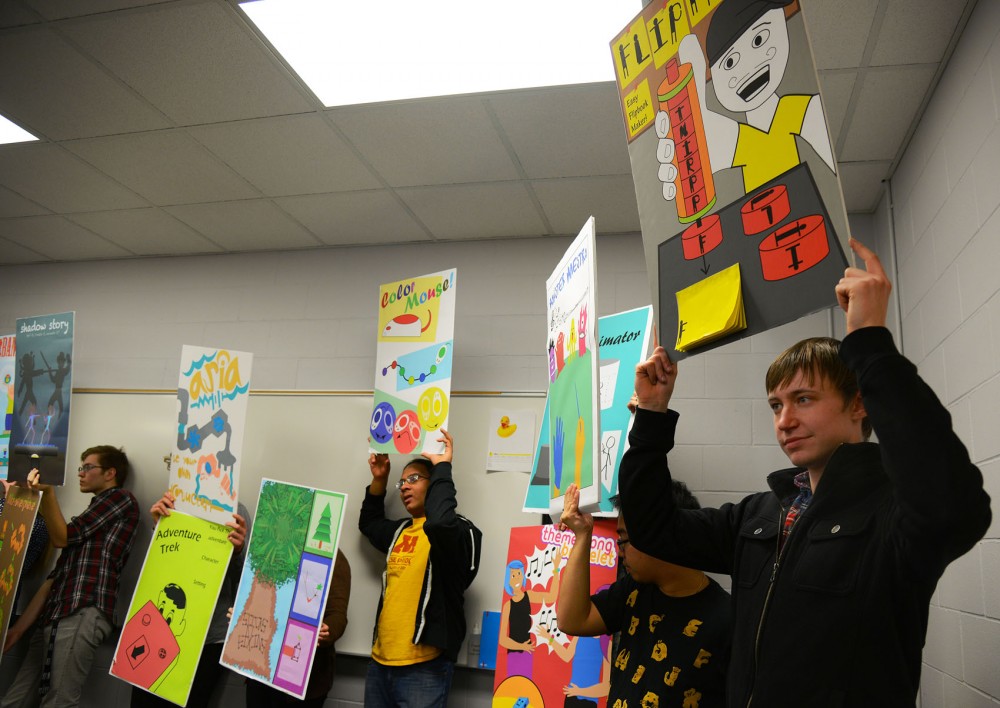In the basement of Rapson Hall, University of Minnesota assistant professor Barry Kudrowitz and his students come together three times a week to make toys.
A lime green NERF gun he designed sits on a shelf filled with other vibrant creations. A rack of white lab coats stands in the corner.
The toy product design class is hidden in the University’s class offerings within the Department of Design, Housing and Apparel.
It combines product design processing with toy making — skills that can be applied to medical devices and consumer electronics, Kudrowitz said.
Students take their own toy product ideas from concept to functional prototype in the course of the semester, he said.
The class is divided into teams, each with two lab instructors — one a former student and one who works in the product design industry at a company like Target or Medtronic. Each team gets a $1,000 materials budget for prototyping.
“I want them to experience the design process so they’ll be comfortable taking their own ideas to reality,” Kudrowitz said.
Kudrowitz created the class in graduate school at the Massachusetts Institute of Technology to get students excited about mechanical engineering. He’s now in his 10th year of teaching it and his fourth at the University.
Since the class began, eight toys have had provisional patents filed, two toys have received patents and one toy’s patent was sold to another company and is currently being made. Some others have been licensed to big toy companies, and another won $20,000 in a competition.
Marin Blair, a graduate student in industrial engineering, said the class is “very interdisciplinary and brings together students with all different kinds of backgrounds and majors.”
Mechanical engineering, graphic design, apparel studies and architecture are popular majors among students in the class, Kudrowitz said.
A ‘difficult and rewarding’ class
Computer science sophomore Catie Jo Pidel took one of Kudrowitz’s classes by accident.
She said by the time she realized the class wasn’t the right one, she was too in love with the product design program to leave. Pidel’s team from last spring is in the early stages of creating the improvisation card game they designed.
Pidel is a class lab instructor this semester. She described it as “by far the most difficult but by far the most rewarding class” she’s taken.
The first milestone of this semester’s toy design class happened Monday, when the 11 teams made elevator pitches to industry experts.
The students will next take their ideas to the Minnesota Children’s Museum to see how kids respond to them.
The class currently has 70 students — both undergraduates and graduates — and 25 lab instructors, Kudrowitz said. It’s taught as a “community of practice,” which means students, teachers and assistants are all expected to learn.
There are similar product design process classes in the Carlson School of Management and the College of Science and Engineering.
Kudrowitz said he hopes the product design program will gain traction and form into a major.
“We’re in the process of figuring out what’s next,” he said.


